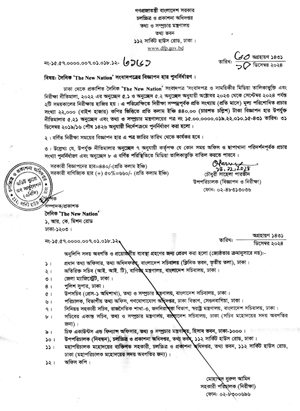Staff Reporter :
Bangladesh’s private-sector short-term foreign borrowings have experienced a notable decline for the fourth consecutive month, reaching $11 billion in March.
This downward trend, observed since December last year, when short-term foreign loans stood at $11.79 billion, has prompted economists to anticipate further adverse effects on economic activity.
In continuation of this trend, short-term foreign loans decreased to $11.07 billion in February and $11.25 billion in January this year, as per Bangladesh Bank data. This contrasts sharply with figures of $13.65 billion in June last year and $16.41 billion in December 2022.
Experts attribute this decrease to several factors, including businesses prioritising debt repayment over new borrowing due to mounting outstanding loan amounts and rising interest rates for foreign loans.
Additionally, corporate entities have delayed business expansion plans, while creditors have become hesitant to extend funds in light of the country’s forex reserves position.
The current economic landscape, characterised by restrictions on imports and a dollar crisis, has further contributed to reduced business activities.
Furthermore, debt servicing has declined, falling to $1.93 billion in February from $3.11 billion in December. Other indicators of foreign borrowing, such as deferred payments and foreign back-to-back LC, also witnessed a decline in March compared to February.
Bangladesh’s external debts exceeded $100 billion by the end of December 2023, up from $98 billion in June 2023. Experts caution that this rapid increase in foreign debt could strain the country’s finances, stressing the importance of prudent resource management and sustainable economic development to reduce reliance on foreign borrowing.
The depreciation of the local currency against the US dollar has exacerbated the situation, resulting in higher interest payments on foreign loans. The taka has lost 36 percent of its value against the dollar in the last two years, leading to an increase in the dollar rate from Tk86.45 to Tk117.
Additionally, Bangladesh’s foreign exchange reserves continue to deplete alarmingly, with the usable amount falling below the $13 billion mark. This implies that less than three months’ worth of import liabilities can be met with the current reserves, with Bangladesh spending around $5 billion per month to pay import liabilities.
According to Bangladesh Bank data, total reserves now stand at $23.77 billion, while the usable amount has fallen to $13.76 billion. The figure stands at $18.32 billion if it is calculated as per the IMF’s BPM6 method, marking a 10-year low, as per Bangladesh Bank’s latest data released on May 12.
Import payments for the July–February period of the financial year 2023–24 also decreased by 15.36 percent in comparison to the same period in the previous financial year, amounting to $40.88 billion.




